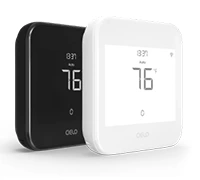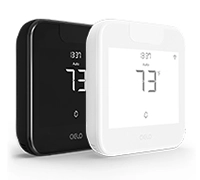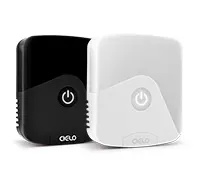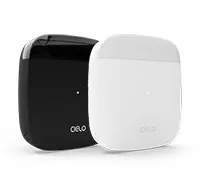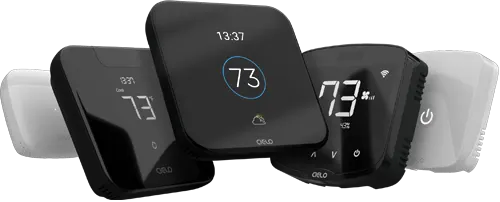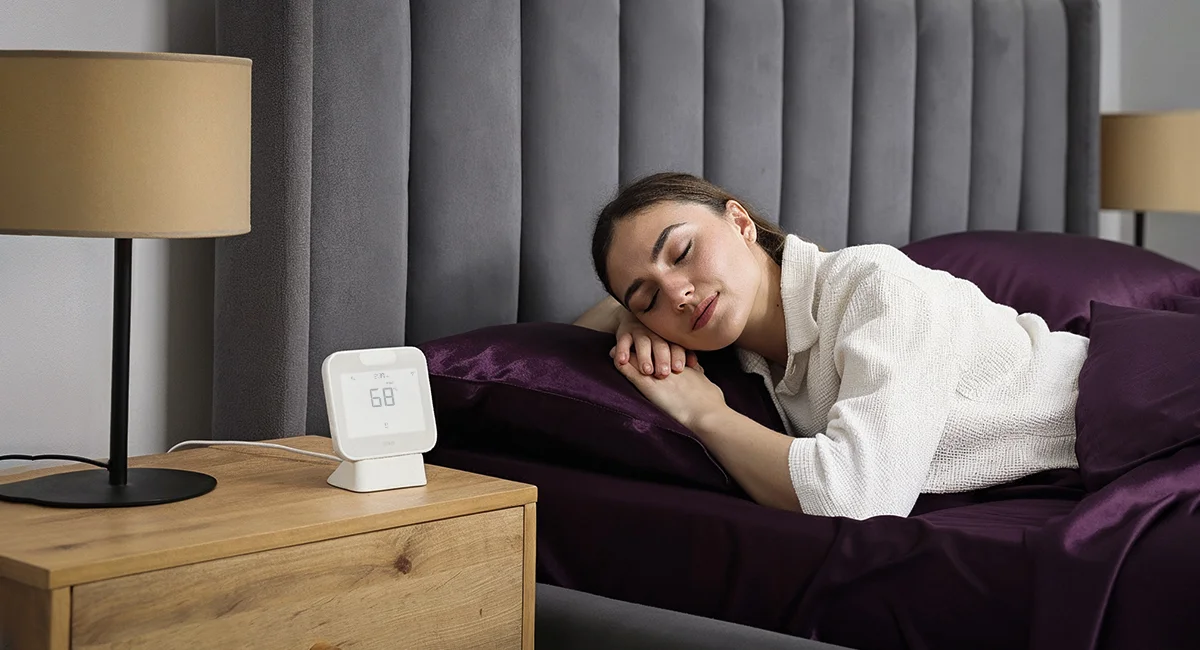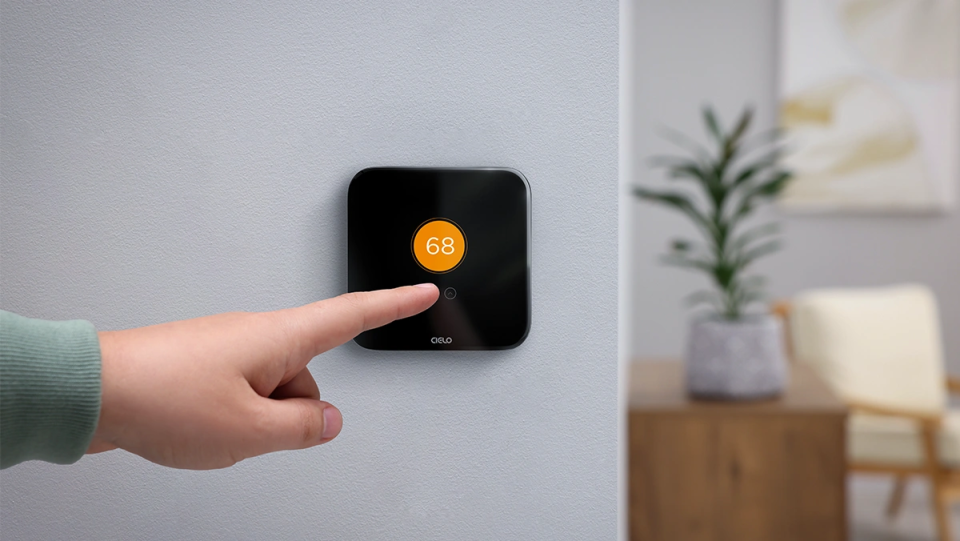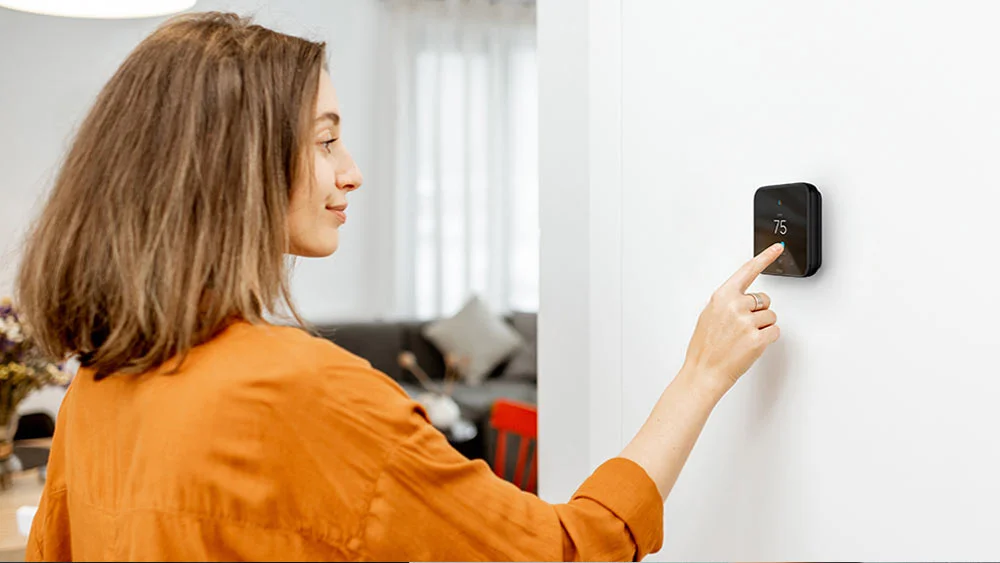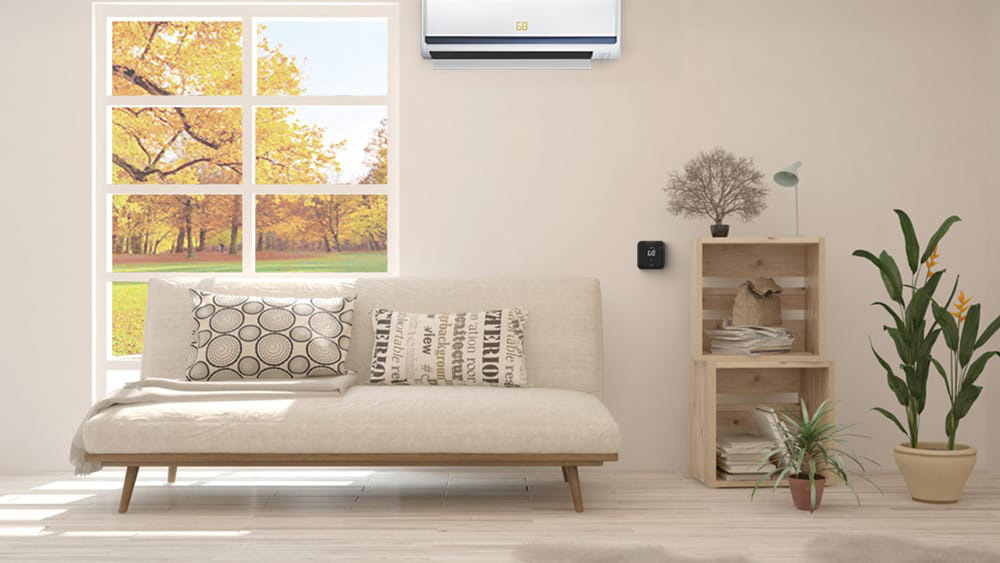
Key Takeaways
- A ductless mini-split heat pump is an HVAC system that provides both heating and cooling.
- Mini-split heat pumps do not require ductwork and deliver air directly where required using indoor air handlers.
- They are highly efficient systems and have low operating costs.
If you are looking for an energy-efficient way to maintain a comfortable home year-round, a ductless mini-split heat pump can be the perfect solution. These versatile systems provide both heating and cooling without the need for extensive ductwork.
Read on to discover how these ductless heat pumps work, their pros and cons, and whether they’re the right choice for your home.
- What Is a Mini-Split Heat Pump?
- How Does a Mini-Split Heat Pump Work?
- Types of Mini-Split Heat Pumps
- Make Your Ductless Heat Pumps Smart
- Advantages of Mini-Split Heat Pumps
- Disadvantages of Mini-Split Heat Pumps
- Choosing the Right Ductless Heat Pump for Your Home
- Common Myths About Mini-Split Heat Pumps
- In Conclusion
What Is a Mini-Split Heat Pump?
A mini-split heat pump is a ductless heating and cooling system that can regulate the temperatures in individual rooms or spaces as opposed to the traditional central air system.
They are a compact and flexible option as they don’t require ductwork. They have two units, one of which is an outdoor compressor, and the other one is an indoor evaporator. The two units are connected through a conduit that contains refrigerant tubing, a power cable, and a drain line.
The flexibility of mini-split heat pumps to work in every season is why they have become increasingly popular. These systems are especially effective for heating during early spring, late fall, and mild winter conditions while providing excellent cooling during the summer. Advanced models even provide effective heating during the peak winter season.
How Does a Mini-Split Heat Pump Work?
A ductless heat pump works by transferring heat between indoor and outdoor environments rather than generating it.
How Does a Mini-Split Heat Pump Cool?
In spring and summer, the heat pump absorbs heat from within your home utilizing the indoor unit’s evaporator and then expels it outside using the outdoor unit.
As warm indoor air flows over the cold evaporator coils, the refrigerant absorbs the heat, cooling the air. This cooled air is then blown back into your home through the indoor unit, providing a refreshing indoor temperature.
The hot refrigerant then moves through the condenser coils, where the heat is released outdoors. After the refrigerant’s warmth is dispersed outside, the refrigerant cools down and becomes a liquid. It is then passed through an expansion valve, getting further cooled before getting sent back to the evaporator to begin the cycle again.
How Does a Mini-Split Heat Pump Heat?
In the fall and winter, the ductless heat pump operation is reversed. Rather than the refrigerant getting heat from indoors, it now collects heat from the outdoors.
The condenser coils absorb the heat from the outside air, warming up the refrigerant. It travels to the compressor, where it gets even more hotter. This refrigerant then moves to the indoor unit and passes over the indoor evaporator coil. At this point, the heat is transferred to the air inside your home. The warm air is circulated throughout the room, and the refrigerant moves back to the outdoor unit, and the process is repeated.
Types of Mini-Split Heat Pumps
One of the best features of ductless mini-split heat pumps is their flexible installation options. The various choices it offers make it a favorite among consumers because you can have it placed according to your home’s structure.
1. Single-Zone Mini-Split Heat Pumps
Single-zone mini-splits are designed to control an individual room temperature and have a single indoor and outdoor unit.
These units are better if you just have a single large area to heat or cool. This can be your bedroom, living room, or any area where you spend most of your time. These are also perfect options for areas such as your garage.
2. Multi-Zone Mini-Split Units
A multi-zone mini-split system consists of multiple indoor units connected to a single outdoor unit. Each indoor component can function independently at different temperatures despite being connected to a single outdoor unit.
This is an ideal and cost-effective option for you if you have a number of rooms in your house to heat or cool. You can tailor temperature preferences in each room, enhancing comfort.
3. Wall-Mounted Mini-Splits
As the name suggests, wall-mounted mini-split systems are positioned near the top of a wall. Its effective operation and simple installation make it a popular choice.
Wall-mounted mini-split systems are best for rooms with at least 7′- 8′ high ceilings, as they need to be mounted approximately 6 feet high.
4. Floor Mounted Mini-Split
A floor-standing ductless heat pump is placed on the floor, usually against a wall. It is a go-to option where mounting on walls or ceilings isn’t ideal. Their flexible placement makes them perfect for areas with unique heating or cooling requirements.
5. Ceiling Cassette Mini-Split
Ceiling-mounted mini-splits are installed within the ceiling, offering an unobtrusive look. Their discreet placement ensures comfort without compromising your room aesthetics. They are also perfect for rooms with limited floor or wall space.
Since they are flushed within a ceiling, they distribute conditioned air more evenly throughout the room.
Make Your Ductless Heat Pumps Smart

You can make your mini-split smart by pairing it with a smart thermostat for mini-splits. This smart device provides the convenience of being able to control your home’s temperature from anywhere, anytime, using your phone. Beyond convenience, the mini-split thermostats have dozens of smart features that can make your home more energy-efficient and elevate your comfort.
For instance, Cielo Breez Max offers a wide range of next-gen features such as scheduling, location-based controls, and energy usage tracking. Moreover, you get an advanced feature called Comfy Max that is designed to maintain your ideal temperature while preventing overheating and overcooling.
Your best choice to make any mini-split, window,
or portable AC smart. Enhance your comfort and savings.
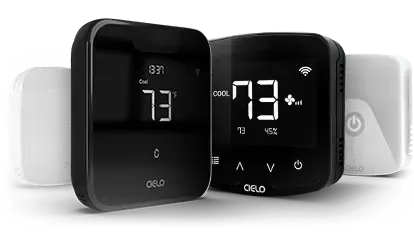
Advantages of Mini-Split Heat Pumps
-
Highly Efficient
Mini-split heat pumps are highly efficient as they avoid the energy losses that can occur with ductwork since conditioned air is delivered directly into an area. Duct losses can account for over 30% of energy consumption, especially when ducts are located in unconditioned areas like attics.
-
Easy to Install
Since they don’t require ductwork, they can be installed in considerably less time with minimal effort. You can check this detailed mini-split installation guide.
-
Zoning Capability
Central air systems with one thermostat often have trouble maintaining consistent temperatures in all areas of your home.
Ductless heat pumps solve this by allowing you to control the temperature in individual rooms or zones through separate air handlers installed in each space. This makes them a perfect option for households with varying temperature needs.
-
Quiet Operation
Mini-split systems operate quietly, with newer models featuring advanced variable-speed fans that reduce noise even further.
Disadvantages of Mini-Split Heat Pumps
-
High Upfront Cost
While mini-splits usually offer cost and energy savings over the long run, the initial installation can be quite costly. If you already have ductwork, it will cost less to install a central system compared to a ductless heat pump.
-
Aesthetic Concerns
Many homeowners find the appearance of the indoor air handlers unfitting for an otherwise aesthetically pleasing room setting.
-
More Maintenance Tasks
You will need to clean and replace the filters of each indoor unit regularly. If you have multiple units, this means additional maintenance tasks. Moreover, the outdoor unit also needs periodic cleaning for optimal function.
-
May Struggle In Cold Weather
Although advanced models can heat up to -13 degrees, not all ductless heat pumps can perform well in freezing weather. In such cases, a backup heating source like a furnace is required.
-
Less Filtration Options
Mini-split ductless heat pumps only include basic filtration. On the other hand, central systems support add-ons like whole-house dehumidifiers, air purifiers, or ionic filters.
Choosing the Right Ductless Heat Pump for Your Home
Here are some factors to consider when choosing a ductless mini-split heat pump for your home:
-
Mini-Split Size
To begin with, ensure that you have the right unit size for your space. A larger unit will frequently turn on/off, leading to energy waste and inconsistent temperatures. On the other hand, an undersized unit will struggle to maintain a comfortable temperature.
Several factors influence the size you’ll need, including window size, ceiling height, and the number of people occupying a space. Moreover, you will need to decide how many indoor units are required based on whether you want to heat/cool a single area or multiple rooms in your home.
-
Efficiency Rating
The cooling efficiency is determined by the seasonal energy-efficiency rating (SEER). Heating efficiency is expressed as the heating seasonal performance factor (HSPF). The higher the ratings, the greater the efficiency.
As of January 2023, the Department of Energy introduced new testing standards for measuring energy efficiency. SEER is now replaced by SEER 2 and HSPF by HSPF2.
If you live in a cold climate, choosing a model with the best HSPF2 should be your main priority. On the contrary, in hotter climates, select a unit with the best SEER2. Even though it might cost more upfront for a model with a higher rating, you’ll save on long-term operating costs.
-
Cost
A single-zone ductless heat pump costs around $1500, with prices increasing for multi-zone systems depending on the number of indoor units.
The cost to install a mini-split heat pump varies by factors such as type, brand, size, and number of indoor units. The average cost to install a ductless heat pump is $3000.
Common Myths About Mini-Split Heat Pumps
There are many misconceptions about mini-splits that might be keeping you from considering one. Let’s clear up these myths so you can experience the full advantages of these ductless systems.
- Mini-splits are too expensive: While the upfront cost may seem high, rebates and tax credits are available to encourage the switch to energy-efficient HVAC systems. Moreover, they have low operational costs that can offset the initial price in a few years.
- Ductless heat pumps are only suitable for new homes: A mini-split heat pump installation has nothing to do with a house being new or old. They can be installed anywhere! Older homes without ductwork can specifically benefit from ductless options.
- Mini-splits don’t heat well in extreme cold: While these units are designed for moderate climates, recent innovations have produced heat pumps that can efficiently heat in freezing weather.
In Conclusion
Ductless mini-split heat pumps offer a versatile and energy-efficient solution for heating and cooling your home. Their ability to provide zoned temperature control, quiet operation, and easy installation makes them an attractive alternative to traditional HVAC systems. While they may have a higher upfront cost, their low operating expenses make them a worthwhile investment.
Frequently Asked Questions
Can Ductless Heat Pumps Heat/Cool a Whole House?
Ductless heat pumps are designed for zoned heating and cooling, making them ideal for individual rooms or smaller areas. For a larger home, you can opt for a multi-zone mini-split system to maintain a perfect temperature.
What Is the Difference Between a Heat Pump & a Mini-Split Heat Pump?
A heat pump is a ducted unit that relies on ductwork to circulate conditioned air throughout your home. On the other hand, a ductless mini-split heat pump delivers air directly to individual rooms through indoor air handlers.
Are All Mini-Splits Heat Pumps?
All mini-splits are not heat pumps, as some have only cool functionality. A mini-split heat pump provides both heating and cooling.
How Does a Heat Pump Work When It’s Freezing Cold Outside?
Since a heat pump works by absorbing heat from the outside, you must be questioning where the heat is absorbed from when it’s cold outside. There is still plenty of heat to be gathered, even in low temperatures. During extreme weather conditions, refrigerant drops to a level below the temperature outside and can absorb the available heat.
